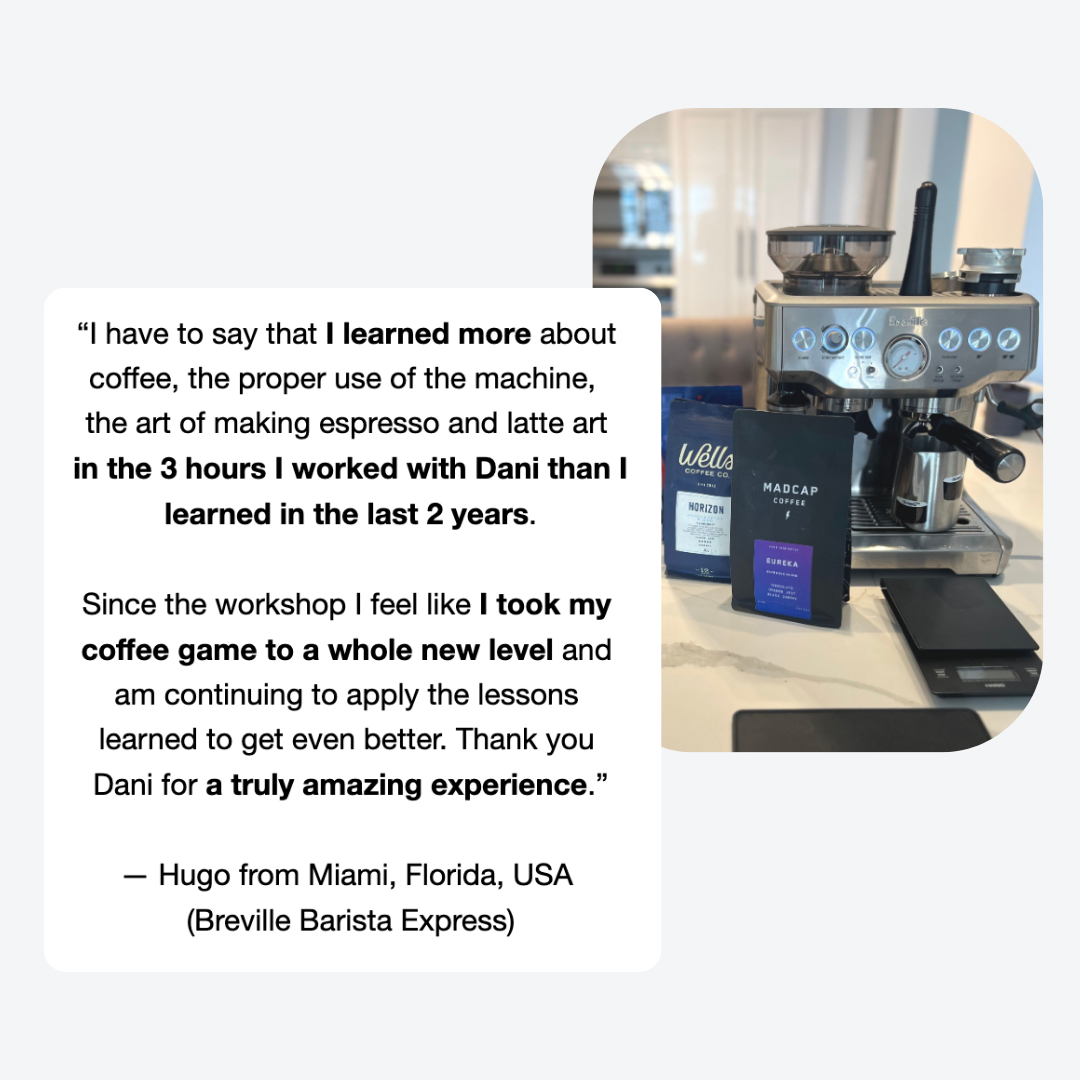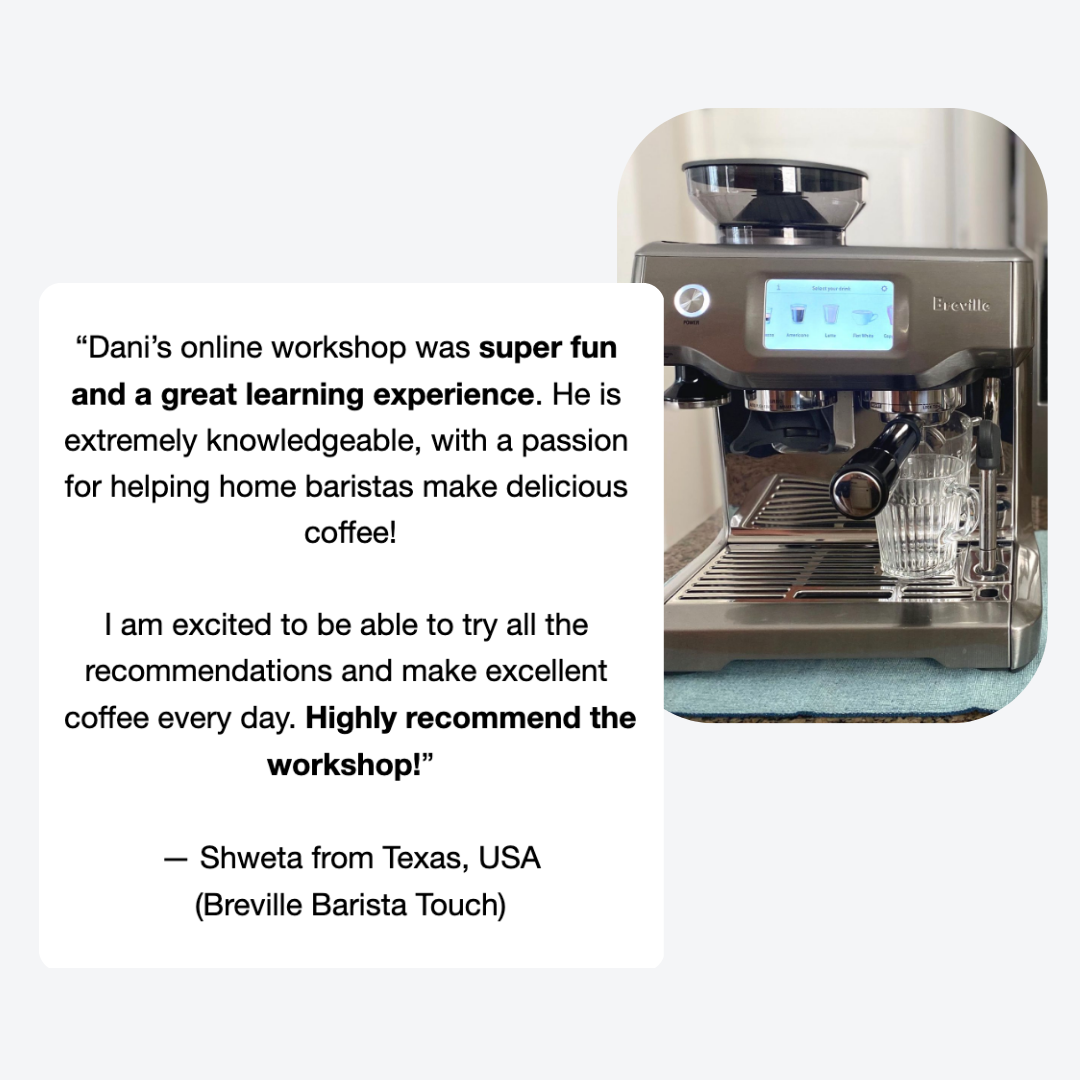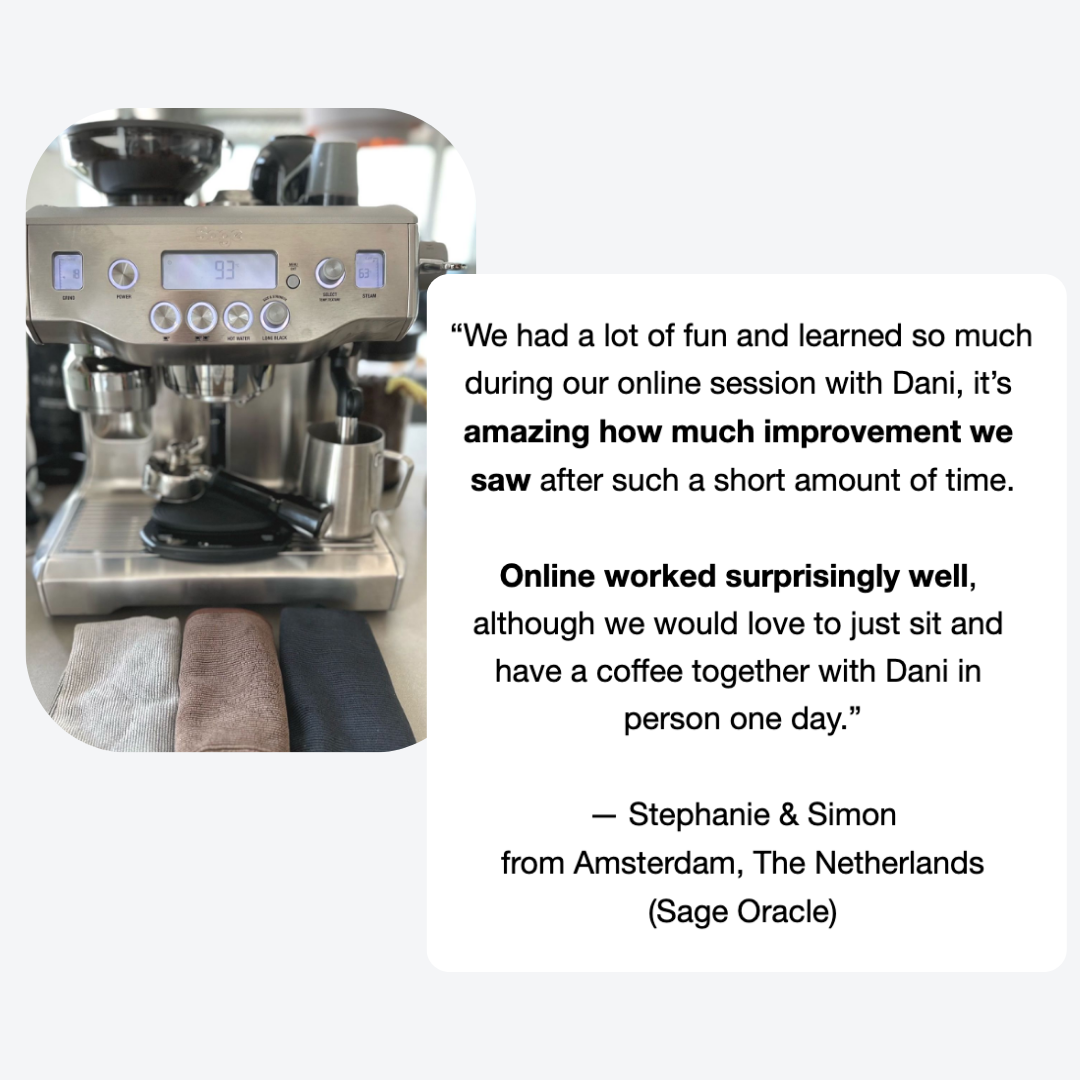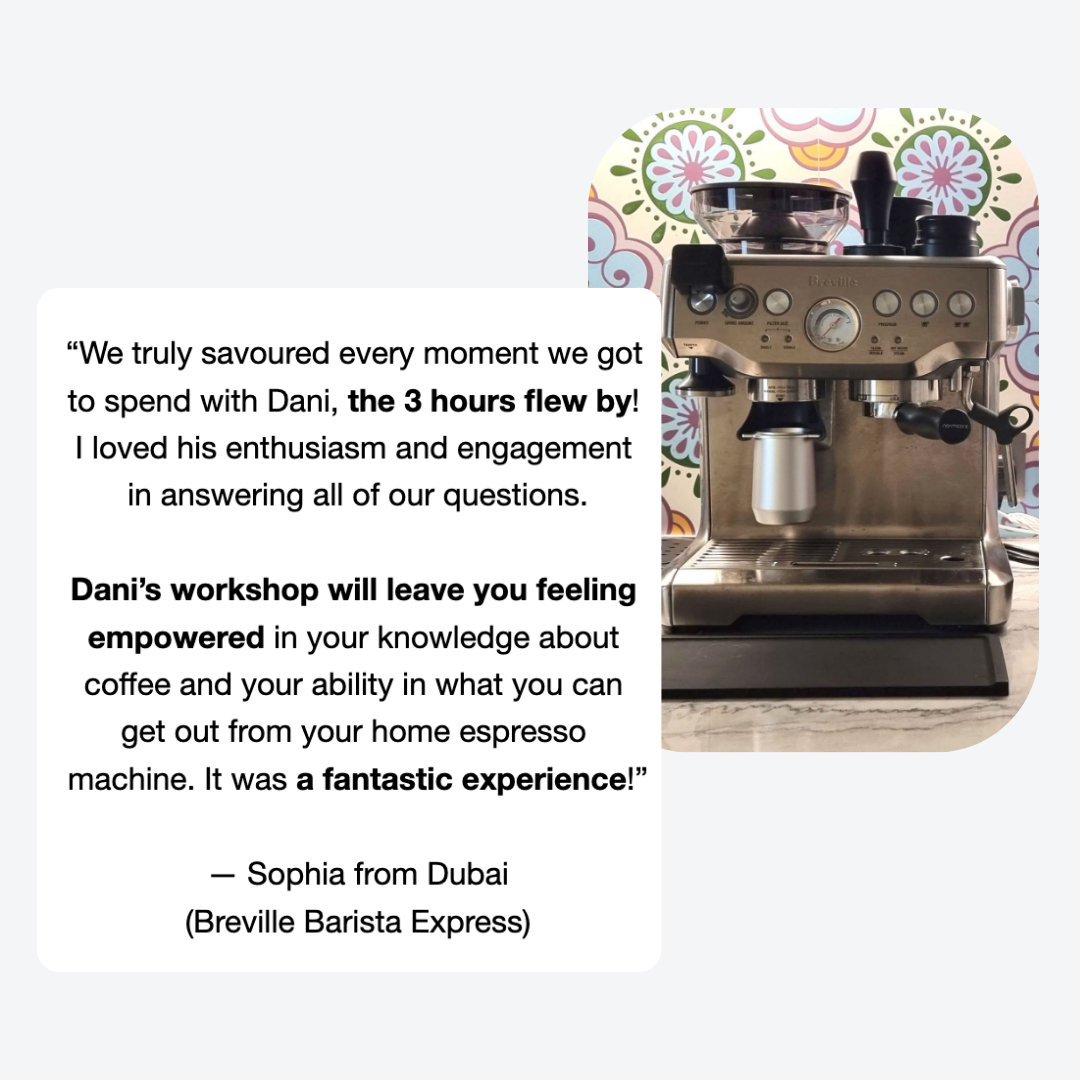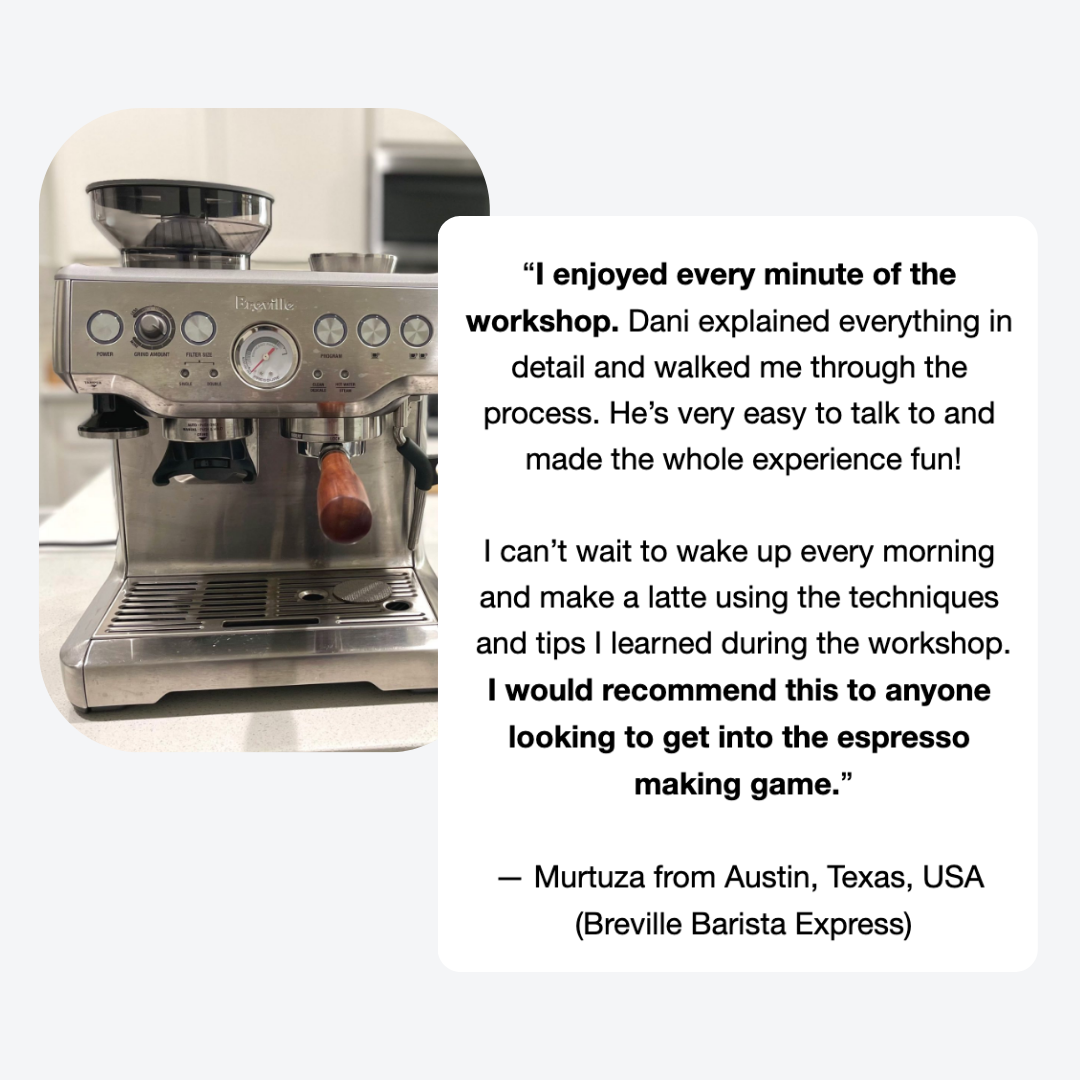3 tips on how to select the right coffee beans for you
Coffee freshness, roast level and processing method
The taste of your espresso is significantly impacted by how you go about your dial in process: finding the right grind size, using a coffee scale, puck prep, brew ratio etc. There’s something else though, very important, but often overlooked by home baristas: the coffee beans being used.
Before going into more details about the tips I have on how to select the right coffee beans for you: please consider looking for local specialty coffee roasters and avoid as much as possible buying coffee from the supermarket or grocery store.
This way you not only support a small business in your community, but you’re also getting a bag of coffee beans freshly roasted, as opposed to picking one up from the supermarket, with no idea about how long it’s been sitting there. Many of the supermarket brands lack information on sourcing practices and processing, and oftentimes roast the coffee too dark. In that case, the beans will be really challenging to dial in and the coffee will leave you with a very unpleasant flavor (e.g. burnt, ashy).
The characteristics or essential qualities of the coffee beans you’re using to make espresso at home can refer to a few aspects, some of the most important being:
Freshness
Roast level
Processing method
Use these as a simple framework when you’re looking to buy a new bag of coffee beans and you’ll get closer and closer to the right coffee beans for you.
Coffee freshness
Coffee freshness matters and can have a big impact on both the aroma and flavour of your espresso. My strong recommendation is: whenever you check the label or packaging, look for a “Roasted on” date and avoid “Use by” or “Best before” dates. As a rule of thumb, for best results, look to make espresso at home with coffee beans that are 1 – 2 weeks off roast.
Old coffee beans
They are less forgiving and typically require more grinder adjustments. The espresso shots will not only be more prone to channeling, but they will also come out thinner, watery and with little to no crema. In my experience, the espresso tastes flat and has an unpleasant paper-like undertone.
Freshly roasted coffee beans
If the coffee beans are roasted too fresh, they are also not indicated for immediate use, not until they have had time to rest or degass (release of carbon dioxide CO2 developed during roasting). On top of a very thick crema, the espresso shots will run very unevenly (due to the large amount of gas trying to escape) and taste sharp, rough and muddled.
Coffee roast level
Many home baristas buy coffee beans only to find it very challenging to dial in the espresso. Or, they entirely dislike the flavor profile and level of acidity. So, here’s a simplified explanation of different roast levels. Hopefully it’ll help you find the right roast for you without too much hassle.
Note: Making and tasting coffee is a learning journey in and of itself. Along the way you’ll discover coffees which you’ll enjoy more than others. Either in the comfort of your own home or in a café, I encourage you to keep an open mind and expose your tasting buds to different coffees, textures and flavors, you may be surprised!
Light roasted coffee
Light roasts have a thin body, with delicate fruit and floral flavors, high acidity and low bitterness. The presence of acidity in light roasted coffee is often referred to as “bright”. When speaking about light roasts think: crisp, bright, acidic, floral, fruity.
Medium roasted coffee
Medium roasts sit in between a light and a dark roast. They are more balanced, with a fuller body, yet they can still be fruit-forward.
Dark roasted coffee
As the roast progresses, acidity goes down and the coffee’s intrinsic origin flavors are overtaken by flavors produced during the roasting process. Dark roasts are often bold and rich, with caramel-like notes, low acidity and high bitterness. When speaking about dark roasts think: bold, rich, robust, chocolatey.
Moreover:
If you’re making your purchase online, the roasting company should usually present you with a complete set of information regarding the coffees sold, including the roast level.
If you find yourself in a physical store and you can’t spot any details on the label, don’t hesitate to ask a staff member for assistance. It helps mentioning the type of espresso setup you have at home (especially the grinder) and the taste profile you’re after.
In case you have an entry-level home espresso machine with a built-in grinder (e.g. Sage and Breville, De Longhi, Solis, Gastroback), I recommend looking for a medium or medium-dark roast, as that will get you the most consistent results.
Coffee processing method
Once harvested, coffee beans can be processed in a few different ways. The main processing methods are:
Washed
Honey
Natural
This too will influence the texture and flavors you’ll find in your espresso. Knowing the differences can help you make a more informed decision when choosing the next bag of beans. Based on my own personal tasting experiences, as well as research, a few helpful facts to keep in mind:
Washed coffees
They tend to be more fruity, have a bright crisp acidity and more clarity of flavors.
Honey and naturally processed coffees
These coffees tend to have a more complex flavor profile, heavier body, lower acidity and a rich, syrupy sweetness.
I hope you find these tips helpful and, if you’d like to dive deeper, you may consider our espresso and latte art home barista workshops. Happy brewing!



